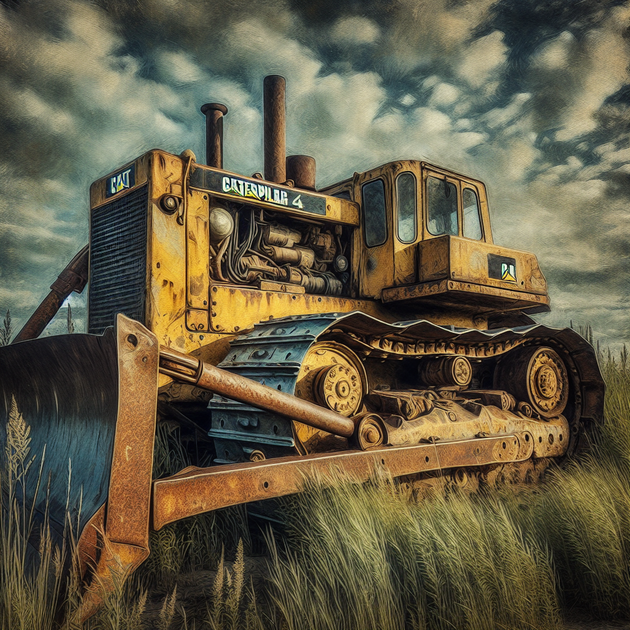Have you ever stared at a vintage piece of heavy machinery—like a classic 1970s Cat D4 dozer—wondering if there’s any way to get it moving without firing up the engine? For anyone tasked with retrieving an old bulldozer that’s been sitting for years, this isn’t just a curious thought—it’s the difference between an easy haul and an all-day headache.
Let’s dig into whether you can actually free wheel the tracks on a 1970s D4 dozer, what that even means, and what steps might help your retrieval go smoothly.
What Does “Free Wheeling” Mean for a D4 Dozer?
The term “free wheeling” in the context of heavy equipment like a Caterpillar D4 dozer refers to getting the tracks to roll freely—meaning they’ll spin without power from the engine. This is especially useful when you need to tow or winch out an old machine that won’t start or move under its own power.
For most modern vehicles, disengaging the drivetrain is as simple as popping it into neutral. But things are rarely that simple with older bulldozers like the classic 1970s D4. These machines use heavy-duty transmissions and final drives that were built to withstand serious work—not necessarily easy rolling.
Can You Actually Free Wheel Tracks on a 1970s D4 Dozer?
Short answer: it’s possible—but definitely not as straightforward as with cars or even newer tracked equipment.
Here are some key things to know about freeing up those tracks:
- No True Neutral: The transmission may have a neutral position but that doesn’t mean the whole drivetrain is disengaged.
- Final Drives Stay Engaged: The final drives (the gearboxes at each end of your axle) keep things pretty locked up unless specifically disconnected.
- Heavy Resistance: Even if in neutral, internal drag makes pushing or towing tough—sometimes near impossible by hand.
- Sprocket Lock: On many older Cats, sprockets are directly coupled; so if something’s seized or jammed inside, nothing’s moving.
If the transmission works and nothing is seized up, putting it in neutral may allow some movement—but expect serious resistance. Free wheeling gets even trickier if any part of the drivetrain is rusted solid after decades in one spot.
Practical Steps for Track Retrieval on Vintage Bulldozers
Retrieving a stuck or dead D4 dozer takes patience—and sometimes creativity. Here’s how experienced mechanics approach it:
- Check Transmission: Make sure it actually shifts into neutral (some older transmissions refuse after sitting for years).
- Try Winching Gently: With transmission in neutral and brakes released (if possible), try gentle winching—never yank hard or you could break something expensive.
- Avoid Towing Long Distances: Dragging unpowered tracked machines over long distances risks major internal damage.
- If All Else Fails… Removing drive sprockets or final drive covers can disconnect things mechanically—but this is time-consuming and often requires heavy tools.
One trick some old-timers use (if possible) is to jack up one side at a time and see if either track will spin by hand. If both are locked tight even in neutral—with brakes off—you’re likely dealing with seized components inside.
An Old-School Mechanic’s Story
A friend once shared his experience with rescuing his grandfather’s forgotten Cat D4 from under decades of weeds. He expected to just “pop it in neutral” and winch it onto a trailer. Instead, he found both tracks locked solid—even though everything looked fine from outside. After hours of head-scratching and several cans of penetrating oil later, they realized rust had welded parts together inside one final drive casing. In the end, what saved them was removing enough bolts to pull off an access cover—breaking loose the stuck component manually before anything would budge.
Moral of the story? Vintage machines hide their stubbornness well.
Tips Before You Start Moving That Old Dozer
- If possible, research your specific model’s service manual—it might offer clues about disengaging drives.
- Bring plenty of basic tools (wrenches, hammers), plus lubricants like PB Blaster or WD-40.
- If there’s any doubt about what’s stuck inside—don’t force it! Internal repairs on these beasts aren’t cheap.
- If you’re unsure about safety or technique, bringing in an experienced mechanic could save hours—or even days—of frustration.
So next time you’re eyeing up an old Cat D4 from the ‘70s that needs moving, remember—free wheeling those tracks isn’t always simple or guaranteed. It takes know-how (and sometimes brute force) but knowing where to start can make all the difference.
What’s your craziest story tackling stubborn vintage machinery—or did you find a trick that actually worked?

Leave a Reply